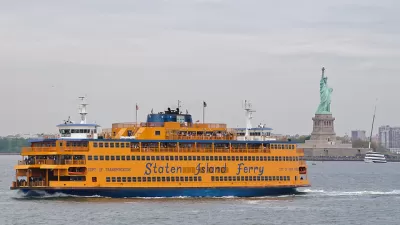In this fourth and final installment on Bus Rapid Transit, Streetsblog and Walter Hook discuss how to make BRT work along 1st or 2nd Avenue--two ready-made BRT corridors.
"Streetsblog: What are the options for configuring BRT on First and Second Avenue? If a three-lane configuration is not politically feasible, what else might we end up with?
Walter Hook: It would take a lot of political courage to take three lanes out of First and Second Avenue exclusively for buses, but the current plan, de facto, also takes three lanes at the station stops (see diagram after the jump). I don't think anything has been finalized, so perhaps we will get a great design even on First and Second Avenue. It would take some political heavy lifting to turn them into New York's first ‘real' BRT corridor. The folks at NYCDOT and the MTA know what they are doing, they are pretty familiar with the Latin American BRT systems, and there is no exact precedent for First and Second Avenue, so it would take some real creativity to pull it off.
The initial thinking, I believe, has been to allow only limited stop services inside a bus lane designated primarily with paint. The busway road configuration would probably look something like Broadway south of Houston Street, with a new nice bus shelter built on what used to be several parking spaces (a bus bulb), but with pre-paid ticketing like on Fordham Road."
FULL STORY: BRT and New York City, Part 4: Getting It Right

Study: Maui’s Plan to Convert Vacation Rentals to Long-Term Housing Could Cause Nearly $1 Billion Economic Loss
The plan would reduce visitor accommodation by 25,% resulting in 1,900 jobs lost.

North Texas Transit Leaders Tout Benefits of TOD for Growing Region
At a summit focused on transit-oriented development, policymakers discussed how North Texas’ expanded light rail system can serve as a tool for economic growth.

Using Old Oil and Gas Wells for Green Energy Storage
Penn State researchers have found that repurposing abandoned oil and gas wells for geothermal-assisted compressed-air energy storage can boost efficiency, reduce environmental risks, and support clean energy and job transitions.

Opinion: DC Encampment Sweeps Hide, but Don’t Solve, Homelessness
President Trump recently ordered the clearing of encampments built by unhoused people on federal land in Washington, D.C.

Santa Barbara Could Build Housing on County Land
County supervisors moved forward a proposal to build workforce housing on two county-owned parcels.

San Mateo Formally Opposes Freeway Project
The city council will send a letter to Caltrans urging the agency to reconsider a plan to expand the 101 through the city of San Mateo.
Urban Design for Planners 1: Software Tools
This six-course series explores essential urban design concepts using open source software and equips planners with the tools they need to participate fully in the urban design process.
Planning for Universal Design
Learn the tools for implementing Universal Design in planning regulations.
Ascent Environmental
Borough of Carlisle
Institute for Housing and Urban Development Studies (IHS)
City of Grandview
Harvard GSD Executive Education
Toledo-Lucas County Plan Commissions
Salt Lake City
NYU Wagner Graduate School of Public Service



























